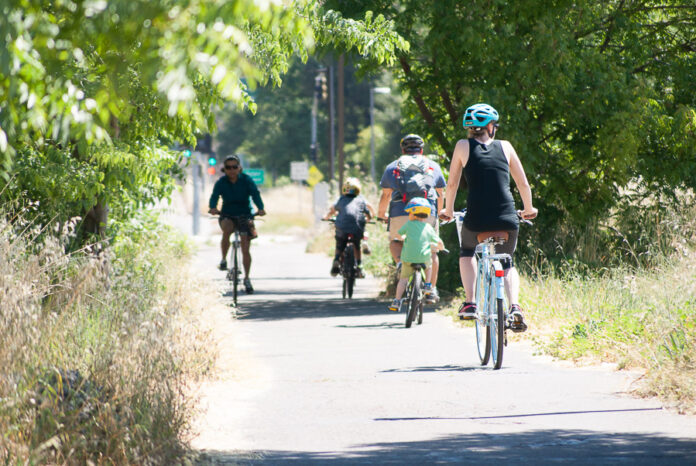Incorporating exercises with a resistance element can potentially increase lifespan by five years
By KATIE HELLMAN — science@theaggie.org
Exercise intensity has been found to be correlated more strongly with a longer lifespan than exercise duration.
Approximately 16% of deaths in the US can be attributed to physical inactivity, even in individuals who eat a balanced diet and maintain a healthy weight. Exercise promotes lower blood pressure and cholesterol, while also strengthening the heart and reducing the possibility of developing chronic diseases.
“Up to 10,000 steps per day may be associated with a lower risk of mortality and cancer and CVD (cardiovascular disease) incidence,” a study by PubMed reads. “Steps performed at a higher cadence may be associated with additional risk reduction, particularly for incident disease.”
Another similar study from Copenhagen found that the intensity of cyclists’ exercise played a much stronger role in preventing heart disease than the time they spent biking.
“Men with fast intensity cycling survived 5.3 years longer, and men with average intensity 2.9 years longer than men with slow cycling intensity,” the study reads. “For women the figures were 3.9 and 2.2 years longer, respectively.”
The first studies investigating the link between exercise and health were conducted by Jeremy Morris in the 1940s and 1950s, where he found that bus drivers and conductors in London had lower rates of coronary artery disease when their work required a higher level of physical activity. He obtained similar results in a follow-up study that showed that mail carriers who walked and biked during their delivery jobs were healthier than those with desk jobs in the postal industry.
Keith Baar, a molecular exercise physiologist and professor in the departments of neurobiology, physiology and behavior and physiology and membrane biology, spoke with UC Davis Health about the best type of exercise.
“I would say it has to be the one with a resistance element,” Baar said. “This type of exercise makes your heart work against a heavy load or a lot of pressure. For example, when you lift something, especially with your legs, your heart must work against a greater pressure. This makes your heart get stronger.”
Baar furthered commenting on exercise strategies directed towards those who have sedentary jobs or lack free time.
“When you’re commuting on foot or bike, make your commute fast,” Baar said. “If you’re walking, walk quickly to get a higher return on your time. If you’re riding your bike, go a little faster than you feel comfortable.”
Baar recognized that the results of the exercise studies provided a compelling reason for individuals to maximize the benefits of more intense exercise.
“The point is, we need to be physically active to help the heart work better and some of that work needs to be at a high intensity,” Baar said.
Written by: Katie Hellman — science@theaggie.org





